If you asked people to name great places to take pictures, it’s likely that very few would list South Dakota. In fact, go ahead, think of one thing you’d travel to South Dakota to photograph. Still thinking? That’s too bad, because there are some really nice spots, which is why I’ve recently returned from leading my fourth trip there.
The fact that few photographers visit South Dakota is, to me, one of its great appeals. Most places you go, you’ll probably be the only serious photographer. And if you pick your locations carefully, you won’t have to do a lot of driving, either. Rapid City makes for a great jumping off point, with a decent airport and well placed between the Black Hills and the Badlands. So that’s where I start with my group.
Custer, South Dakota, offering lots of lodging and meal options, makes for a great base to explore the Black Hills. It’s only an hour’s drive west the airport, which means that if you arrive in the afternoon, you’ll still have time to do some photography. What are the Black Hills, you ask? An area of forests, mountains, rock formations and lakes, a large part of which are part of Custer State Park. Well-known for its resident bison herd, it’s also home to the highest peak between the Rockies and Europe (Black Elk, or Harney Peak, at 7242 ft). Add to that Mt. Rushmore, plus some other local attractions, and you can easily spend a couple of days doing photography there. After that, you can drive east to the Badlands, and make some stops along the way. Below are a few photos from the first part of our trip, and once you get past those, I’ll talk about the Badlands.

This bison was rolling in the dirt to try to chase away the hundreds of flies pestering it. Nice try, but not very effective. Nikon Z 8, Aperture Priority, Sunny white balance, ISO 800, 1/2500 at f/6 in Matrix metering, -1.0 EV, Nikkor Z 180-600mm f/5.6-6.3 VR lens at 320mm.

We visited Custer State Park’s Wildlife Loop early in the morning to take advantage of the low-angled light, and the shadows it creates. Nikon Z 8, Aperture Priority, Sunny white balance, ISO 200, 1/1000 at f/5.6 in Matrix metering, -0.7 EV, Nikkor Z 180-600mm f/5.6-6.3 VR lens at 220mm.
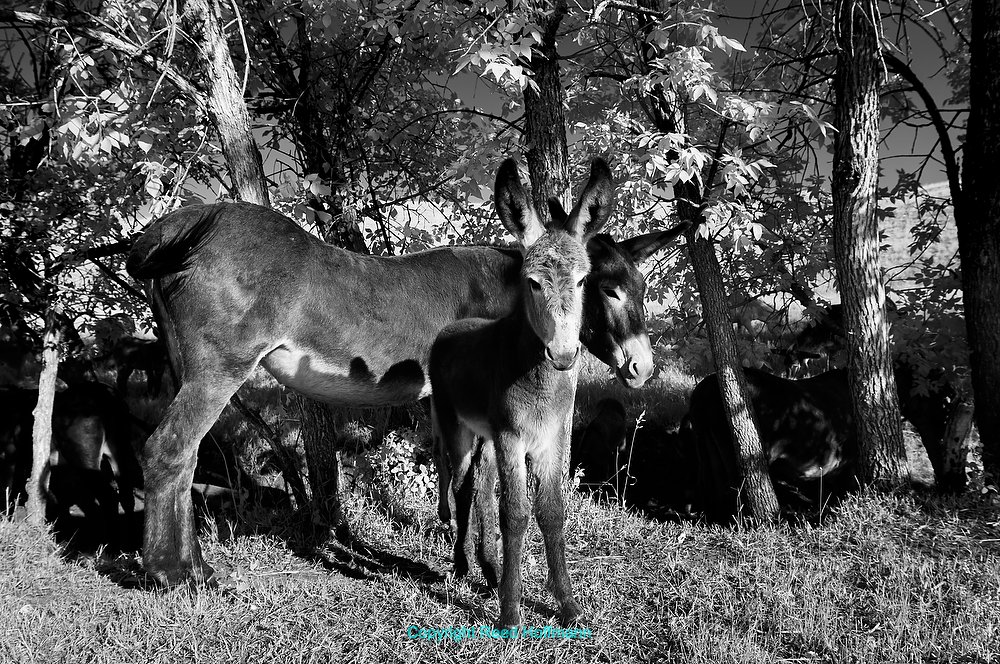
One of the “wild” burros and its offspring, shot in infrared. They were part of a tourist attraction years ago, and were then released into the park. Nikon Z 6 converted to full spectrum, Aperture Priority, Preset white balance, ISO 200, 1/500 at f/7.1 in Matrix metering,Nikkor Z 14-30mm f/4 S lens at 22mm.

“The Needle,” one of many rock formations along the Needles Highway. I demonstrated low-level lighting for my group, and got a bonus when one of the group walked through this exposure with his LCD on (creating the streak of light). Nikon Z 8, Manual exposure, Sunny white balance, ISO 2000, 20-seconds at f/4, Nikkor Z 14-30mm f/4 S lens at 14mm.

We had great light for our afternoon visit to Four Mile Old West Town, just outside Custer. Originally a stop on the stagecoach route, it’s now a collection of old buildings and antiques showing how people lived in that area there in the late 1800s. Nikon Z 8, Aperture Priority, Sunny white balance, ISO 100, 1/500 at f/8 in Matrix metering, -0.7 EV, Nikkor Z 24-200mm f/4-6.3 VR lens at 24mm.
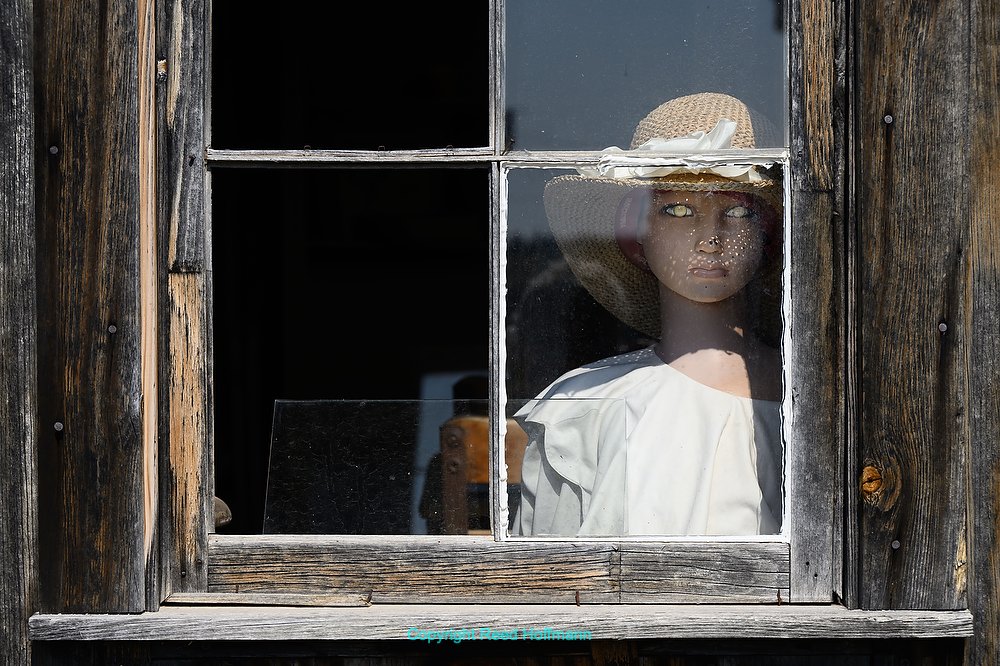
A mannequin inside the one-room schoolhouse at Four Mile Old West Town. Nikon Z 8, Aperture Priority, Sunny white balance,, ISO 640, 1/2000 at f/8 in Matrix metering, 0.0 EV, Nikkor Z 24-200mm f/4-6.3 VR lens at 98mm.
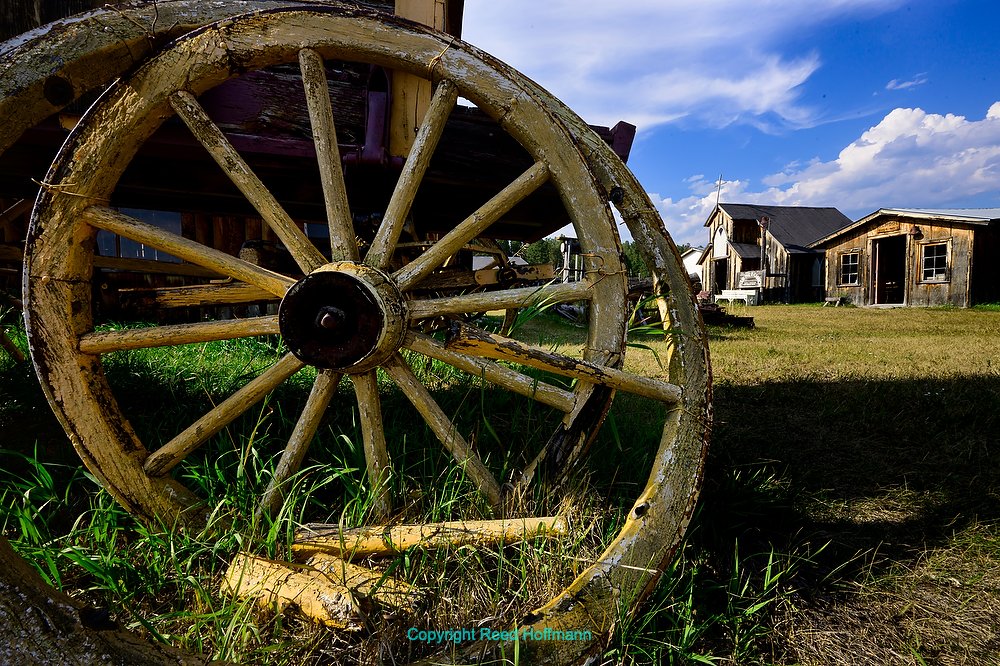
One of the decaying wheels on a stagecoach at Four Mile Old West Town, with the church and other buildings in the background. Nikon Z 8, Aperture Priority, Sunny white balance, ISO 100, 1/40 at f/22 in Matrix metering, -1.3 EV, Nikkor Z 14-30mm f/4 S lens at 14mm.

With Mt. Rushmore close by, I always take my group there late in the day, to explore, have dinner and then photograph the giant sculptures at night. This is a composite of two photos from the same spot. The first was taken just after sunset, with the camera on a tripod, when there was still some light in the sky. The second was taken 20-minutes later, after the sky had darkened, from that exact same spot but now showing the light reflected onto the faces from the program in the amphitheater below. This is before the spotlights are turned on. Once that happens, the faces are so brightly lit that’s all you can see. Nikon Z 8, Manual exposure, Sunny white balance, second image at ISO 4000, 20-seconds at f/6.3. Both captured with the Nikkor Z 24-200mm f/4-6.3 VR lens at 28mm.

Leaving Custer on the morning of our third day, we stopped at the 1880 Train Depot to photograph its train leaving on a short excursion to Keystone. This is the Engineer, waiting to begin the run. Sometimes I switch my camera to black-and-white if the color’s not interesting, or for a more dramatic, or “old-timey” look. Nikon Z 8, Aperture Priority, Sunny white balance, ISO 500, 1/250 at f/8 in Matrix metering, -1.0 EV, Nikkor Z 24-200mm f/4-6.3 VR lens at 83mm.

The engine, beginning its run to Keystone. We then raced ahead of it to a location scouted earlier, to photograph it steaming through the countryside. Nikon Z 8, Aperture Priority, Sunny white balance, ISO 500, 1/500 at f/6 in Matrix metering, -0.7 EV, Nikkor Z 180-600mm f/5.6-6.3 VR lens at 340mm.
From Custer we shifted to Wall, which in addition to the famous Wall Drug, is the busiest entrance point to Badlands National Park. And by busiest, I mean you may have one or two cars ahead of you when going through the gate in September. That’s one of the things I like about the Badlands – they’re never crowded. The other thing? They can be a challenge to photograph.
There are some locations where it’s easy to make good pictures, like Yosemite Valley. Almost any place you stop, there’s a nice photo to be had. Nothing wrong with that, I’ll never complain about being able to make beautiful pictures easily. The Badlands, however, aren’t one of those places. Yes, they’re exotic and alien-looking, but also mostly grey and white. You have to hunt for color, and work the early and late light for the dramatic shadows they create. But that’s also one of the things I really like about working in the Badlands – they challenge you as a photographer. And when the color isn’t there, then black-and-white, or infrared, is a good option.
Badlands National Park is also one of the few national parks you’ll visit where you can walk almost anyplace you want (being careful not to fall, and keeping an eye out for rattlesnakes!). Since the entire area is in a constant state of erosion, leaving footprints isn’t an issue.

We began our first full day in Badlands National Park before sunrise, at Big Badlands Overlook. Once the sun clears the horizon, it lights up the eroding landforms nicely. And it’s one of the few places I’ve found in the park with fealtively large areas of color. Nikon Z 8, Aperture Priority, Sunny white balance, ISO 64, 4 at f/9 in Matrix metering, -0.7 EV, Nikkor Z 24-200mm f/4-6.3 VR lens at 43mm.

The area can get heavy rainstorms in the spring, but by late summer, it’s extremely dry. Getting low with my super-wide lens let me show the parched earth as well as the valleys behind it. Nikon Z 8, Aperture Priority, Sunny white balance, ISO 125, 1/60 at f/11 in Matrix metering, -0.7 EV, Nikkor Z 14-24mm f/2.8 S lens at 15mm.

As I said, there’s not a lot of color in the Badlands, so you have to work at finding it, whether through plants, the formations, the sky or, if possible, all three together. Nikon Z 8, Aperture Priority, Sunny white balance, ISO 160, 1/160 at f/13 in Matrix metering, 0.0 EV, Nikkor Z 14-24mm f/2.8 S lens at 19mm.

With the early-morning light creating heavy shadows, and not much color in the scene, I opted to shoot this in infrared. Nikon Z 6 converted to full spectrum, Aperture Priority, Preset white balance, ISO 100, 1/250 at f/8 in Matrix metering, +1.3 EV, Nikkor Z 24-200mm f/4-6.3 VR lens at 115mm.
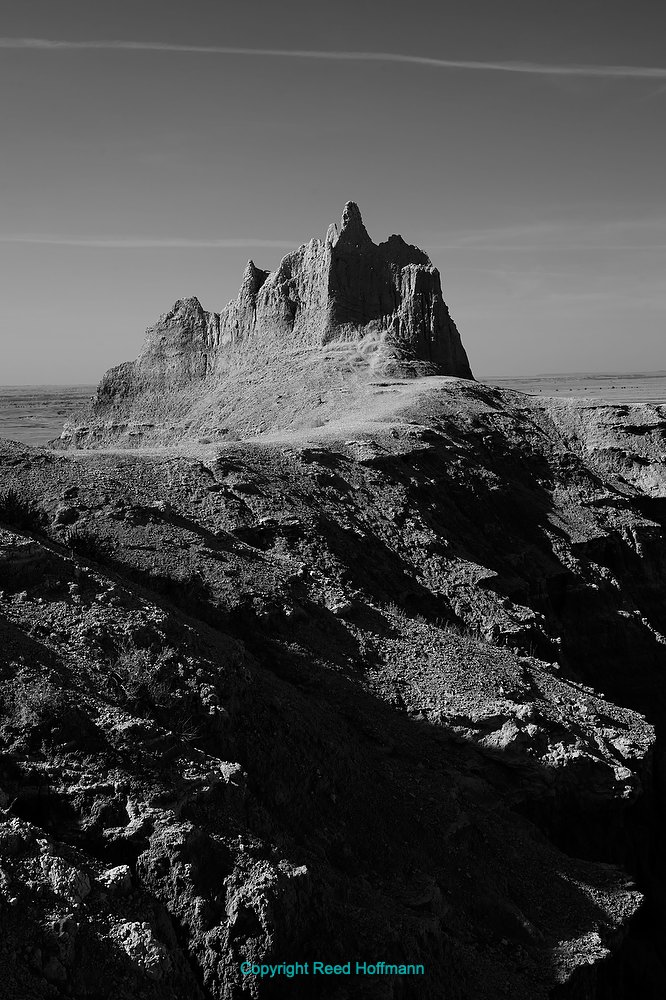
Another scene in the park best made in black-and-white, but this time just regular, not infrared. Having visited the Badlands many times now, I have a good sense of where the best locations are at different times of day, like this spot near Norbeck Pass in late morning. Nikon Z 8, Aperture Priority, Sunny white balance, ISO 64, 1/160 at f/11 in Matrix metering, -0.7 EV, Nikkor Z 24-200mm f/4-6.3 VR lens at 39mm.

With a great sky, texture and nice leading line (curve, actually), I also opted for black-and-white here at Yellow Mounds Overlook. Nikon Z 8, Aperture Priority, Sunny white balance, ISO 64, 1/100 at f/14 in Matrix metering, -0.7 EV, Nikkor Z 14-30mm f/4 S lens at 14mm.
It would be a mistake, however, to only think of the Badlands as a place for landscape photography. While it seems like a very inhospitable environment, the area does support some wildlife. You can often find bison near the Wall entrance station, as well as some pronghorn, prairie dogs and the occasional coyote or rattlesnake inside the park. Sadly, the resident bighorn sheep herd has been decimated by disease. Despite that, we did find a few of them during our final evening there. You can also visit a ghost town just outside the park (actually, a few people still live there), and if you try, you can find a few other non-landscape photo possibilities as well.

Despite the dryness, there’s still some wildlife, like this mule deer. Nikon Z 8, Aperture Priority, Sunny white balance, ISO 800, 1/125 at f/6.3 in Matrix metering, -0.3 EV, Nikkor Z 24-200mm f/4-6.3 VR lens at 200mm.

One of the unique white prairie dogs, at Prairie Homestead, just outside the national park. Nikon Z 8, Aperture Priority, Sunny white balance, ISO 160, 1/2000 at f/6.3 in Matrix metering, 0.0 EV, Nikkor Z 180-600mm f/5.6-6.3 VR lens at 600mm.

Sadly, over half the park’s bighorn sheep have died from a disease they caught from domestic sheep in the area (who are immune to it). But we did find a few of the survivors, picking their way across a steep wall after sunset on our last day in the park. Nikon Z 8, Aperture Priority, Sunny white balance, ISO 1600, 1/250 at f/6.3 in Matrix metering, -0.3 EV, Nikkor Z 180-600mm f/5.6-6.3 VR lens at 340mm.

While photographing the previous group, another visitor asked me if we’d seen the big males down the road. We hadn’t, but quickly rectified that. Nikon Z 8, Aperture Priority, Sunny white balance, ISO 4000, 1/250 at f/6.3 in Matrix metering, -0.3 EV, Nikkor Z 180-600mm f/5.6-6.3 VR lens at 560mm.

My favorite night shoot inside the park is the Toadstool, which I lit with two Lume Cubes. Nikon Z6 III, Manual exposure, Natural Auto white balance, ISO 5000, 1.5-seconds at f/2.8, Nikkor Z 14-24mm f/2.8 S lens at 21mm.

On most of my trips, I try to include some night photography and light painting (like that of the Toasdstool, above). I also found this old wreck outside the park years ago, and always bring my groups to photograph it just after sunset. I’m lighting it with Lume Cubes again, this time using three. Nikon Z 8, Manual exposure, Sunny white balance, ISO 500, 20-seconds at f/4, Nikkor Z 14-24mm f/2.8 S lens at 16mm.
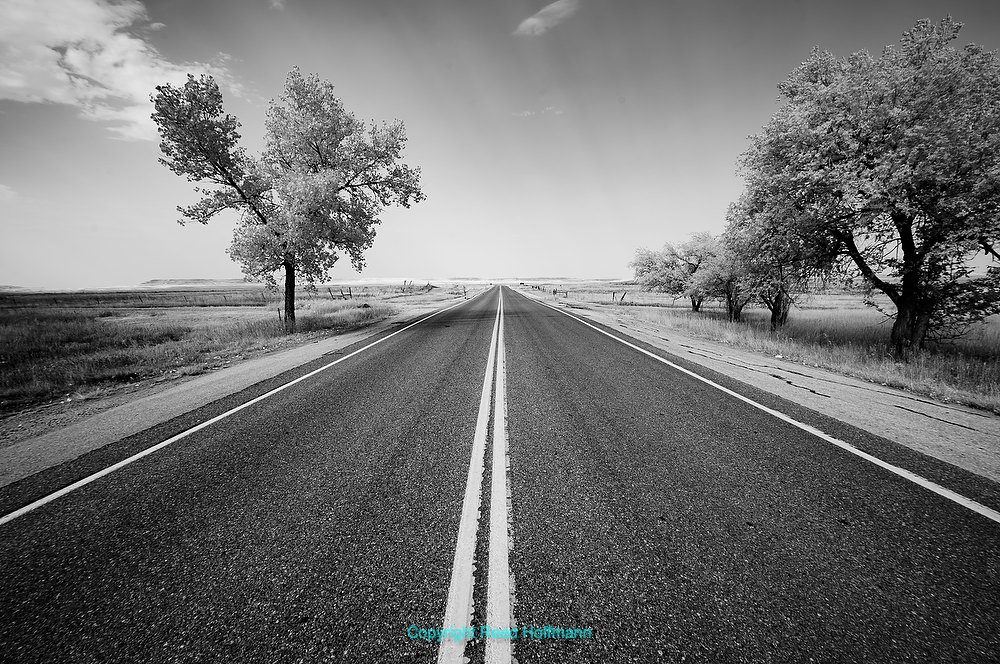
I thought this infrared photo, made outside Scenic, S.D., would make a funny “Welcome to South Dakota” ad. Nikon Z 6 converted to full spectrum, Aperture Priority, Preset white balance, ISO 100, 1/100 at f/11 in Matrix metering, +2.3 EV, Nikkor Z 14-30mm f/4 S lens at 14mm.

The town of Scenic is on the way to the Badlands, and is mostly a ghost town. It makes for a nice stop and some different types of photos. This frame is also in infrared. Nikon Z 6 converted to full spectrum, Aperture Priority, Preset white balance, ISO 200, 1/160 at f/8 in Matrix metering, +1.7 EV, Nikkor Z 24-200mm f/4-6.3 VR lens at 33mm.
I hope by now you understand why I enjoy visiting this part of South Dakota, because it offers such a great variety of photography opportunities. Not just landscape, but wildlife and historical locations as well. So now, when you hear somebody say, “Why would you bother going to South Dakota,” you can tell them “Well, let me tell you about some great places to take pictures there…”
(If you like this story, please share it with your friends and let them know about the links on photography that I post on my business Facebook page. You can also find my photos on Instagram. And if you’re curious about the workshops I teach, you can find them here. Finally, you can subscribe to this blog on my home page.)


I have been on many of Reed’s workshops. They are all awesome. I did South Dakota with him this year.
I was blown away with the variety and spectacular nature of the images. Absolute 5*. If he does it next year GO. I may go again. Mel Cohen DDS